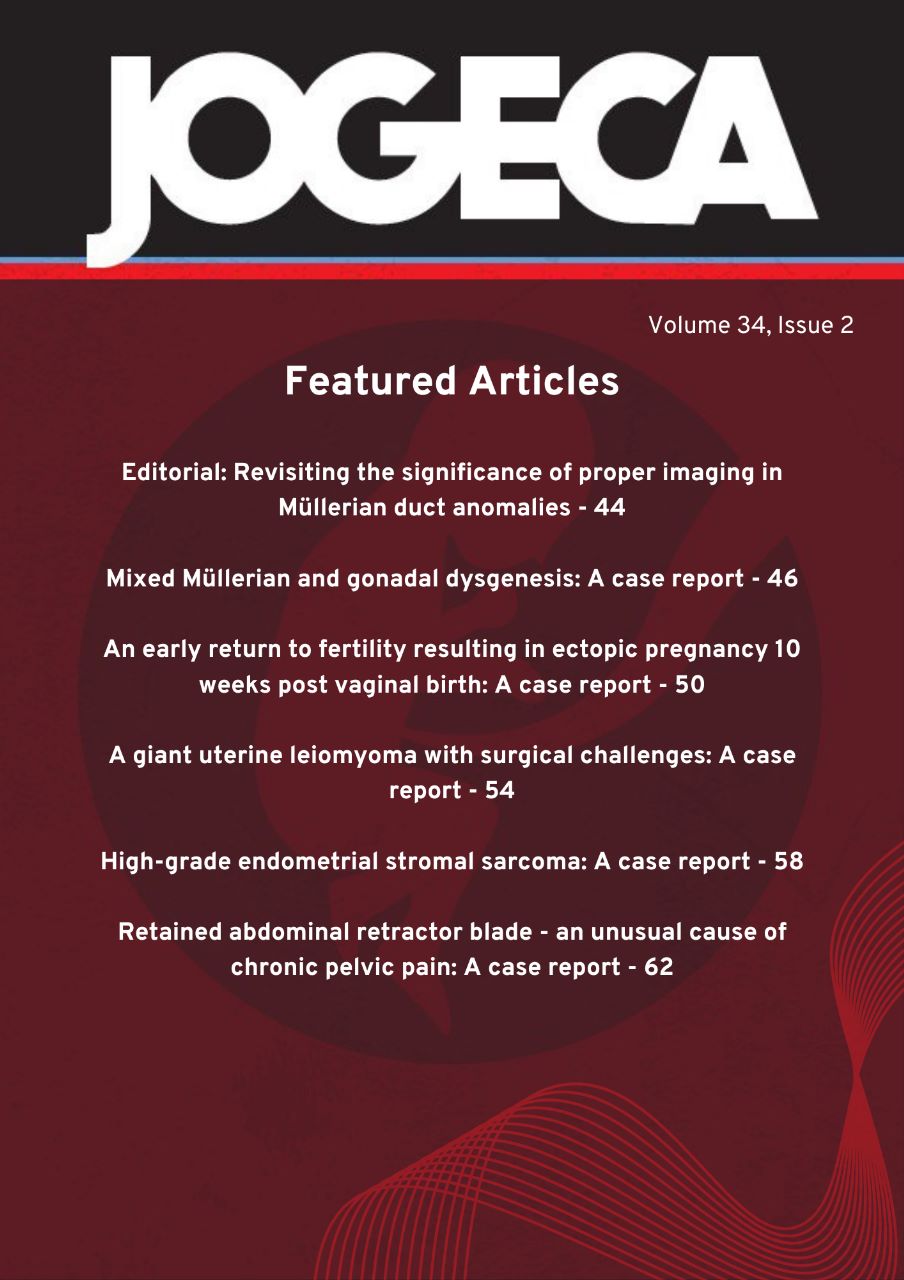Audit of assisted vaginal deliveries at Aga Khan University Hospital: A retrospective study
DOI:
https://doi.org/10.59692/jogeca.v36i1.294Abstract
Background: Assisted vaginal birth is an alternative to cesarean delivery where indicated and can
reduce both maternal and fetal morbidity and mortality. There is a need to maintain and improve skills
through training, research, and mentorship, especially in where access to cesarean delivery remains a
challenge.
Objective: To determine the incidence and outcome of instrumental deliveries at a university teaching
hospital in Nairobi.
Methods: A retrospective study was conducted at the Aga Khan University Hospital between January
and November 2015. All files of patients who had an instrumental delivery during this period were
extracted, and data were collected on parity, indication, type of instrument, birth weight, perineal status,
and Apgar scores.
Results: Of 3000 women who delivered during this period, 132 had assisted vaginal birth (4.4%).
Nulliparous formed 66.7%, and indication was only given in 12% of the cases. 11 percent of all cases
were forceps, whereas 89% were via vacuum. Trainees performed 36 (27%), instructors performed 10
(7.5%), and obstetricians 73 (55.5%) of all instrumental deliveries. Two-thirds of the forceps were
performed by obstetricians. Most (68.9%) babies weighed between 3 and 4 kg. The perineum was intact
in 6%, 51.5% had episiotomy, and 6% had a third-degree tear; however, a fourth-degree tear was not
reported. Two procedures failed, and patients underwent emergency cesarean delivery. 116 (87.8%)
babies had Apgar scores of >6 at 5 minutes.
Conclusion: Assisted vaginal delivery remains a safe and vital skill in the labor ward and has its place in
modern obstetric practice. The rate shown here is much lower than that in most high-income countries.
There is a need to improve training and documentation of indications.
Downloads
Published
How to Cite
Issue
Section
Categories
License
Copyright (c) 2024 The authors.

This work is licensed under a Creative Commons Attribution 4.0 International License.




